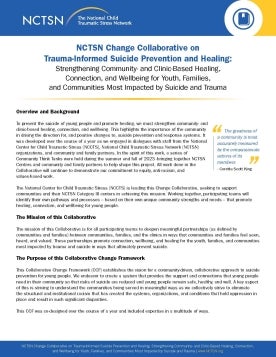
Change Collaborative on Trauma-Informed Suicide Prevention and Healing
Highlights the importance of the community in driving the direction for, and positive changes to, suicide prevention and response systems.
The following resources on child trauma were developed by the NCTSN. To find a specific topic or resource, enter keywords in the search box, or filter by resource type, trauma type, language, or audience.

Highlights the importance of the community in driving the direction for, and positive changes to, suicide prevention and response systems.
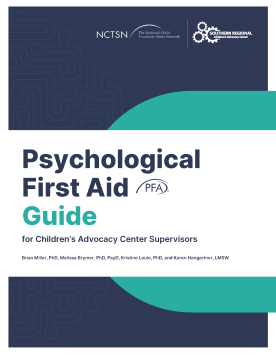
Provides information for supporting the staff in a children’s advocacy center (CAC) setting who have been exposed to critical incidents and may have concerns about their physical or psychological safety.
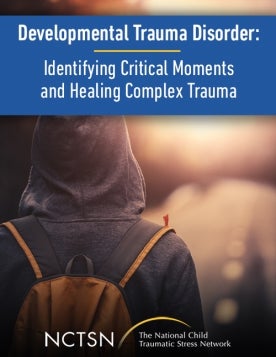
Introduces Isabella, an 18-year-old young adult with PTSD and a regular client of Dr. Gilda Rodriguez, has an intense dissociative reaction after a loudly slamming door triggers a flashback. Dr.
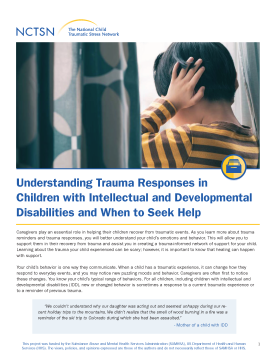
Outlines what responses to trauma could look like in children with IDD.

Provides an understanding of why it is important to talk to children about hate-based violence against AAPI communities, how to recognize signs of traumatic stress and its impact, how to begin a conversation with youth about anti-AAPI hate, and what can be done in response.
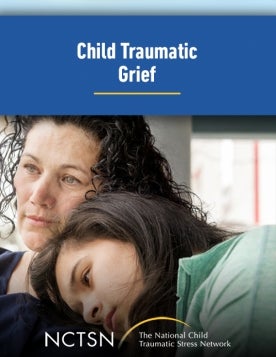
Describes assessment strategies and evidence-based interventions for interpersonal violence in the wake of the COVID-19 pandemic across development, with a focus on 1) how to ask children about their trauma experiences and responses; 2) the use of Child-Parent Psychotherapy (CPP) for young...
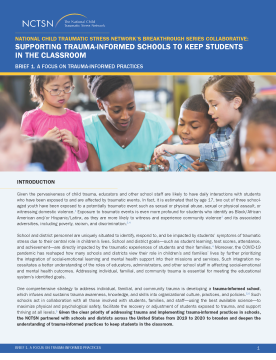
This brief includes a look at the six essential domains developed and addressed as part of the Collaborative Change Framework...
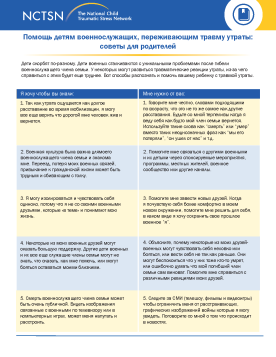
Offers information on military children who are grieving the loss of a loved one. This tip sheet describes how military children dealing with trauma and grief responses may be feeling and what parents can do to help. Translated 2022.

Lets responders review PFA guidelines and assess their readiness to deliver PFA in the field.
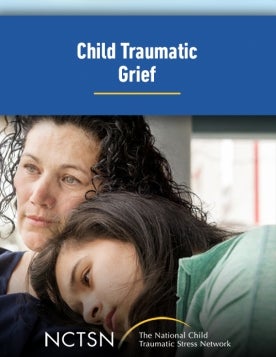
Describes aspects of COVID-19-related deaths that can contribute to children’s traumatic stress reactions, with an emphasis on developmental considerations and behavioral health disparities. To date, more than 140,000 children have lost a parent or primary caregiver to COVID-19-related deaths.
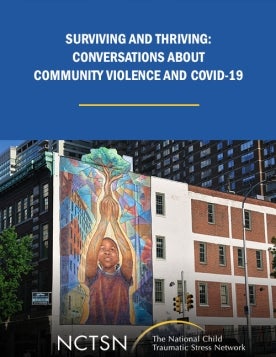
Explores how young people respond to community violence and the lasting effects of marginalization and hate-based trauma. This webinar discusses creative strategies to help youth process these challenges and build resilience.
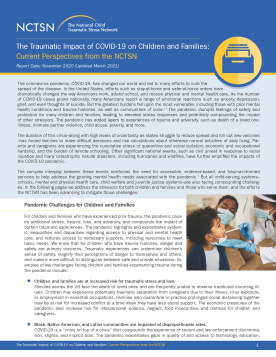
Outlines some of the traumatic impacts that COVID-19 has had on children and families. This report breaks down some of the pandemic challenges that children, families, and child-serving agencies have faced and describes the NCTSN's response to COVID-19.